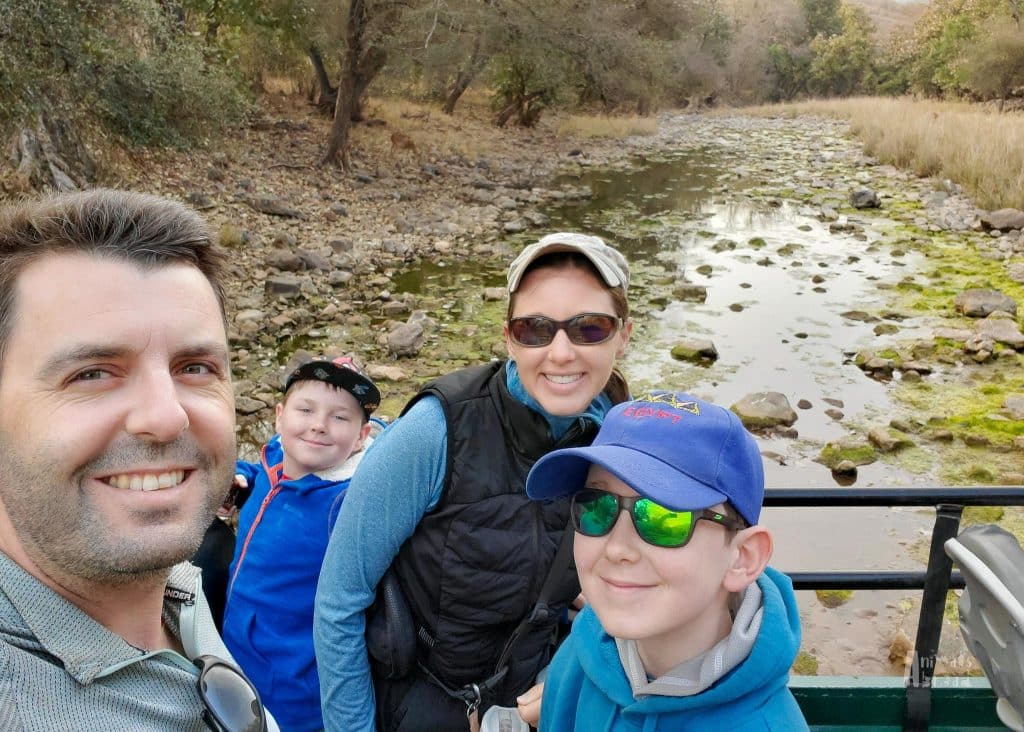As soon as we touched down in India, we were buzzing with excitement to get to Ranthambore National Park for our tiger safari. Nestled in the northern state of Rajasthan, just 130 km from Jaipur, Ranthambore National Park is one of India’s premier wildlife destinations.
While most travellers spend just two or three days at the park, we decided to book a whole week. Tiger trekking was Jackson’s top must-see experience of our world trip, and we wanted to give ourselves the best chance to spot one of these incredible big cats in the wild.
Keep reading for everything you need to know before planning your Ranthambore safari.
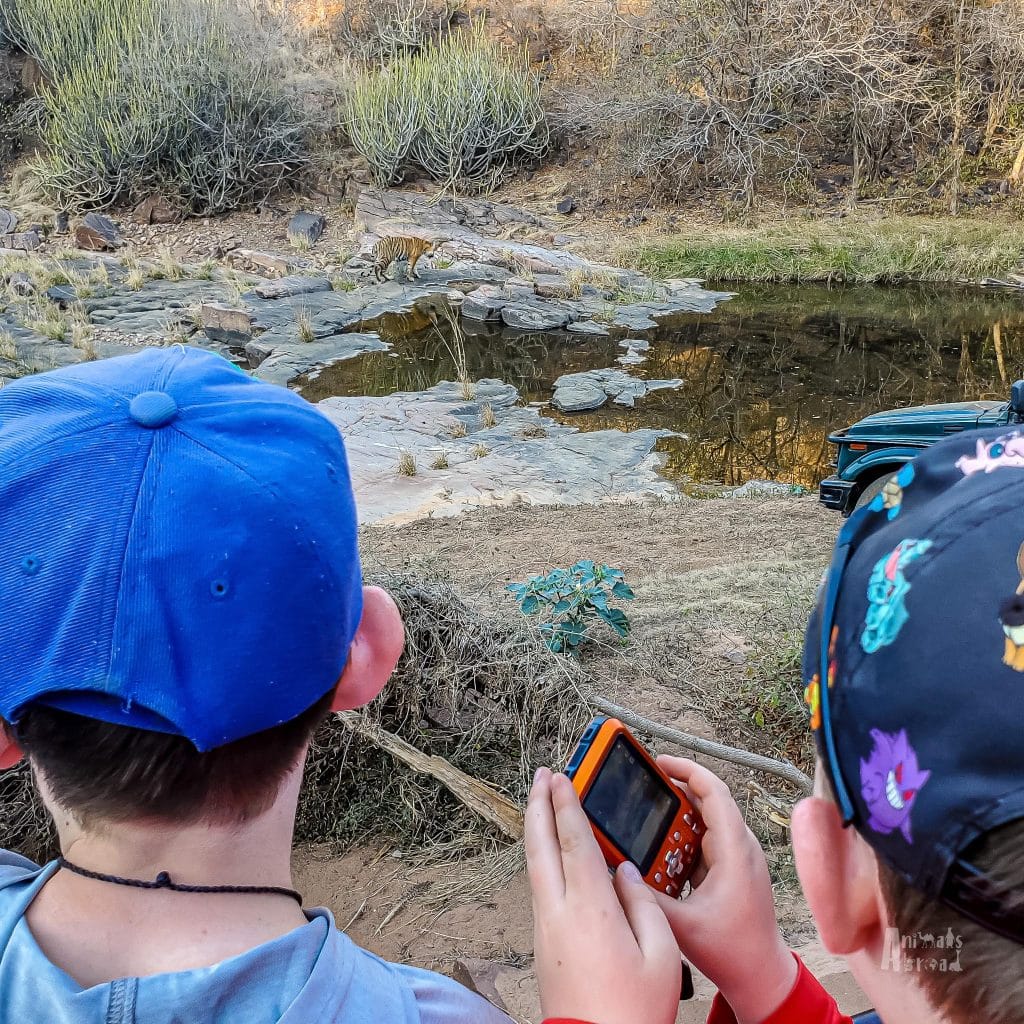
Are the Tigers Wild?
Yes! The tigers of Ranthambore are wild and roam freely across the park. While about 70–75 tigers live in the park, only 20% of the area is open to visitors, meaning around 30 tigers are commonly seen.
Guides don’t use tracking devices or walkie-talkies. Instead, they rely on paw prints and alarm calls from deer and monkeys to track tigers. Each tiger is named and identified by its unique stripe pattern.
That said, tigers are elusive and shy. Unlike lions in Africa that often lounge in plain sight, tigers typically melt back into the forest when spotted. On average, our sightings lasted less than five minutes. We stayed perfectly still, hanging on every breath, hoping they would stay just a little longer.

Are Tiger Sightings Guaranteed?
No. Tigers are wild animals with large territories (up to 60 km² for males and 25 km² for females), so sightings are difficult and never guaranteed. But the anticipation is part of the experience—and when it happens, it’s unforgettable.
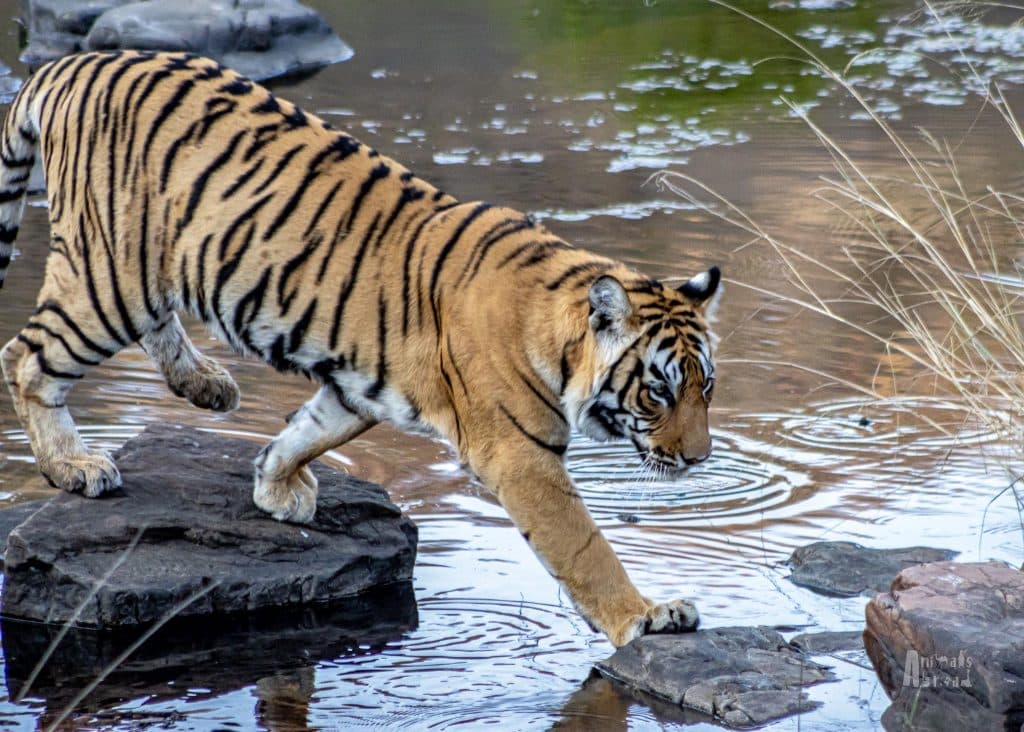
What Else Can I See?
Spanning over 1,334 km², the Ranthambore National Park is best known for its Bengal tigers but is also home to leopards, sloth bears, jackals, crocodiles, hyenas, wild boars, spotted and sambar deer, and the tiger’s favourite meal, the blue bull antelope (nilgai).

What is the Best Time to Visit Ranthambore?
The prime months are October to March, when daytime highs are around 30°C and the forest is relatively cool and comfortable. April to June can also offer great sightings as animals gather near water sources, but be prepared for scorching temperatures in the 40s.
We visited in March, when the deciduous forest had shed many of its leaves, giving us better visibility for wildlife viewing. Bonus: no mosquitoes! The dry season allowed us to skip insect repellent on our drives.

How to Choose a Safari Zone
Ranthambore’s visitor area is divided into 10 zones. Each zone has specific tigers that frequent the area. Sightings vary widely between zones due to the landscape and the tiger density. Zones 1–5 typically offer the best chances, but we also met people who had success in zones 6, 7, and 10. Zone 3 is often considered the most scenic and best for spotting tigers.
We went on seven drives across zones 1, 2, 3 (twice), 4 (twice), and 6. We saw tigers on four drives (Zones 1, 3—both times—and 4).
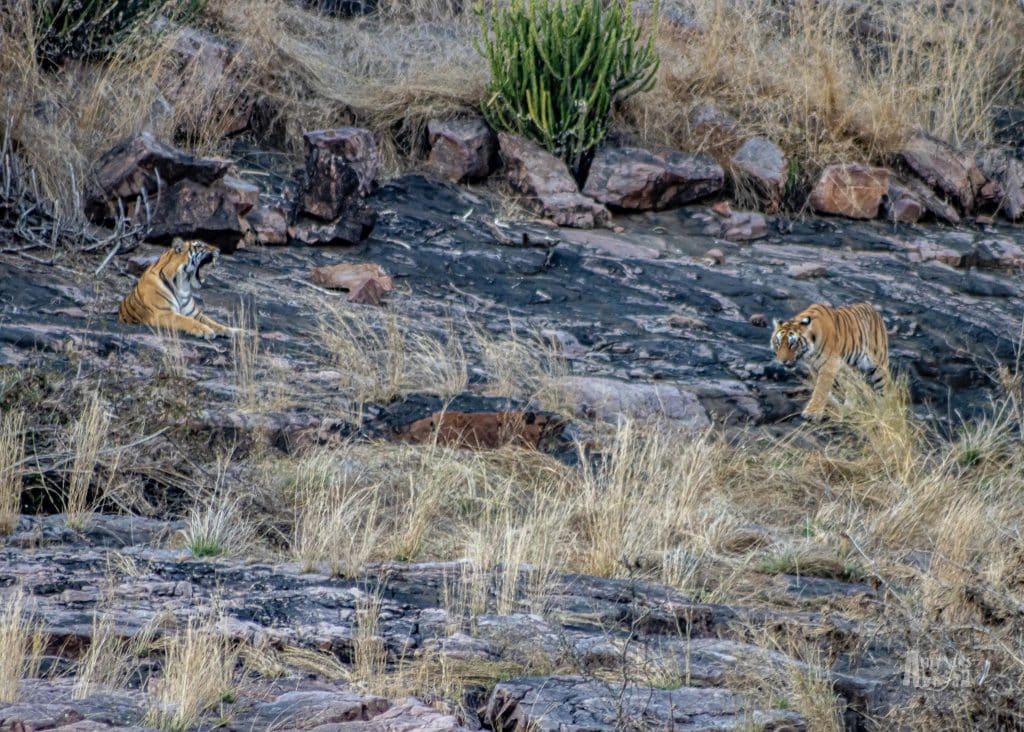
Zone Highlights
Zone 1: One of our best drives! Zone 1 is one of the smaller zones in the park, but it packs a lot of wildlife. We saw four tigers (a mother and her nearly full-grown cubs), a sloth bear, and a leopard.
Zone 2: We did not enjoy this drive. The roads were extremely rough, and the dense jungle made viewing difficult.
Zone 3: Our top pick! Scenic lakes, ancient temples, and great tiger sightings.
Zone 4: Another scenic drive with open grasslands and water. We spotted two 2-year-old cubs. Zones 3 and 4 have large open grassland areas and water sources, increasing the likelihood of spotting wildlife.
Zone 6: Sparse landscape and few animals made for a disappointing drive, although others we met had success with tigers and sloth bears.
Note: Zones 1-5 are closed during the monsoon season (July-September).
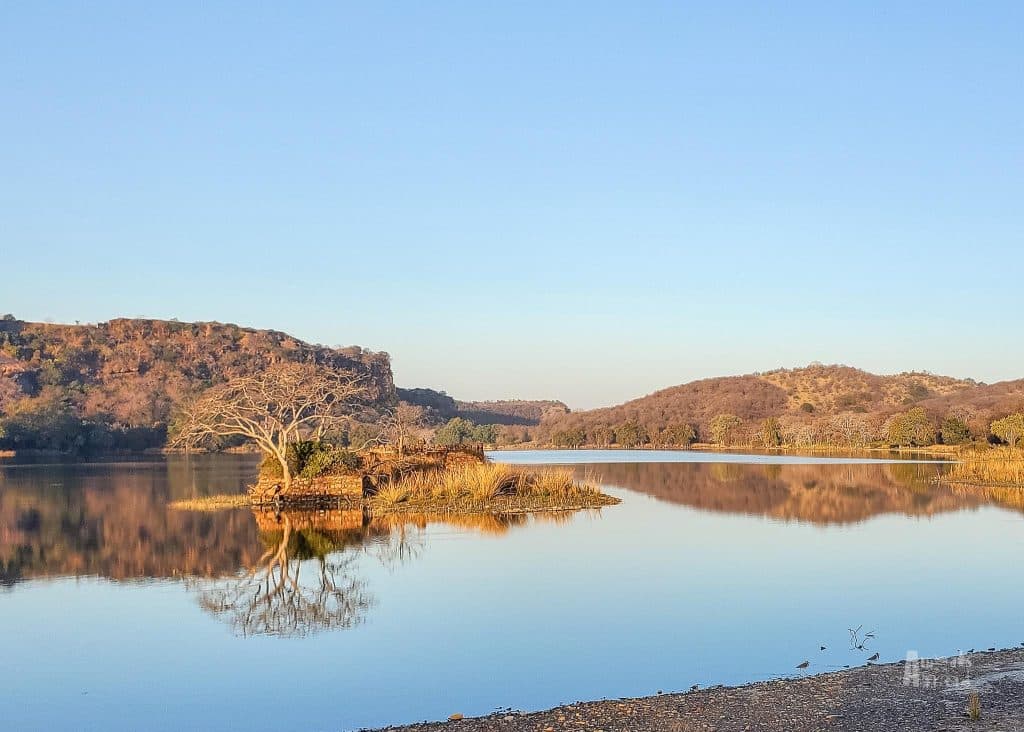
How Many Safaris Can You Do Each Day?
Two per day:
• Morning: 07:00–10:00 (pickup at 06:30)
• Afternoon: 15:00–18:00 (pickup at 14:30)
Tip: Avoid weekends if you can. The park gets crowded with domestic tourists, which increases noise and reduces your chances of seeing a tiger.

Are Morning or Afternoon Drives Better?
As our first guide said, tiger trekking is a matter of luck and patience. You never know when an amazing encounter will occur.
We did four morning and three afternoon drives. Interestingly, all three of our afternoon drives led to tiger sightings, compared to just one morning drive. While some say mornings are better, we found afternoons to be luckier—and warmer!
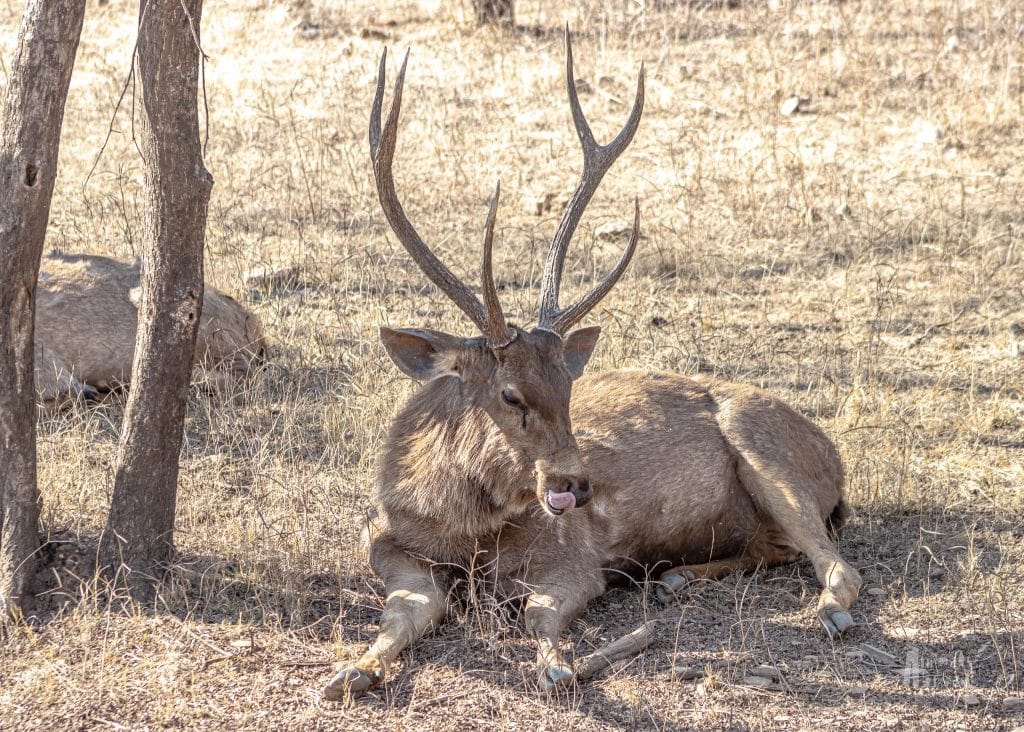
What Are the Safari Vehicles Like?
You have two options:
Private Jeep (5 passengers): ~$500 per drive. These are more comfortable, better equipped for the bumpy terrain, and able to maneuver into tighter spaces to get closer to wildlife. A private vehicle and guide also allow you to tailor the safari to your interests.
Shared Canter Truck (22 passengers): ~$40 per person. These open-air trucks are much bumpier and less agile. We often had to grip the seat in front of us to stay upright, and even saw a few people fall out of their seats. That said, the higher seating can be an advantage when viewing tigers in a crowd of vehicles. We went on the Canter trucks for all our drives.

What Are the Roads Like?
This is not an activity for the faint of heart. Compared to safaris in Africa and South America, Ranthambore’s roads are rougher and safety regulations are looser. Paths are uneven and riddled with potholes. There are no seatbelts, and trucks sway dramatically through the thick jungle.
Passengers often need to duck to avoid being scraped by low-hanging branches. We saw multiple people fall out of seats, and unfortunately, on one drive, Mason hit his head on a metal bar and suffered a mild concussion. Zone 2’s roads were worse due to dried-up creek beds with deep potholes.

Are There Age Restrictions?
Nope. Children of all ages can join, and under-fives are free if they don’t need a seat. That said, tours last three to four hours, and guides expect silence to help them listen for animal calls. This may not be the best fit if your kids struggle with long, quiet stretches.
How Do You Book Safaris?
Safari tickets are limited per zone, and they go fast. Some are released in advance, but most are sold the day before.
Booking is done electronically, usually through your hotel. At 10:00 each morning, tickets are released for:
• That day’s afternoon drive
• The next day’s morning drive
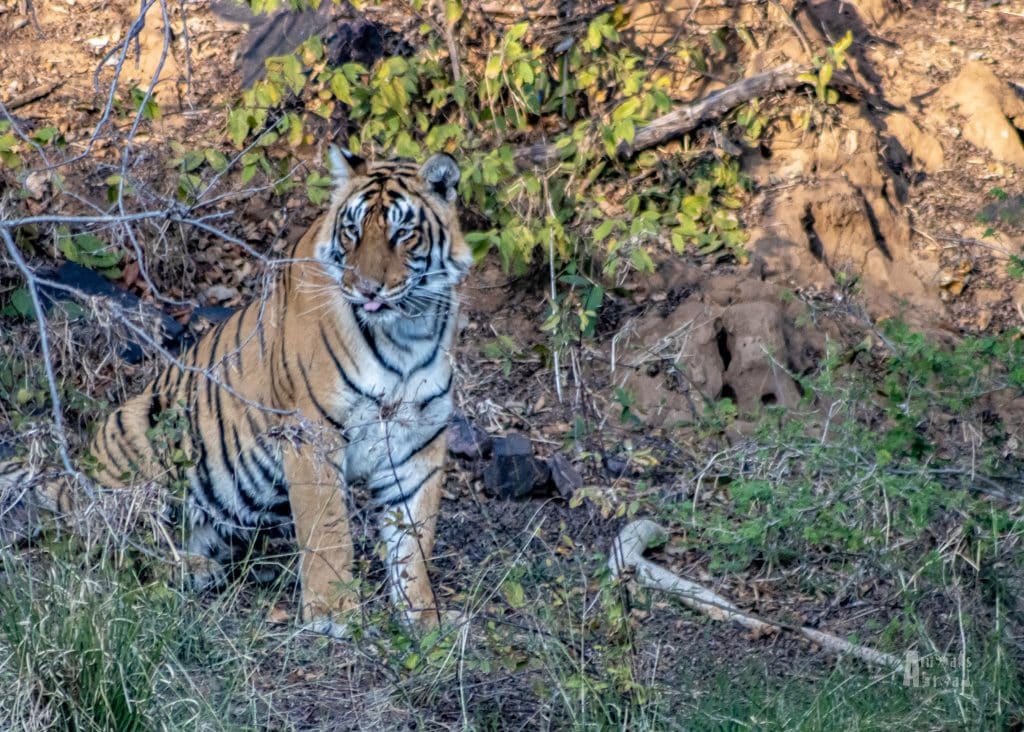
Guide Quality Varies—Speak Up!
A good guide makes all the difference. Some were fantastic—knowledgeable, engaging, and excited to share all kinds of wildlife, not just tigers. Others seemed laser-focused on finding a tiger, and once we had a sighting, they considered the drive a success and their job done.
A couple of times, our guides asked, “Are you happy to have seen a tiger?” Of course, everyone said yes—without realizing that, for some guides, this was a cue to head back early. One of our safaris ended more than an hour ahead of schedule. If this happens, don’t be shy—Speak up and let your guide know you’d like to continue looking for tigers and other animals.
Drivers earn about $1 per passenger and rotate schedules so more locals can work. Tips are appreciated and encouraged.
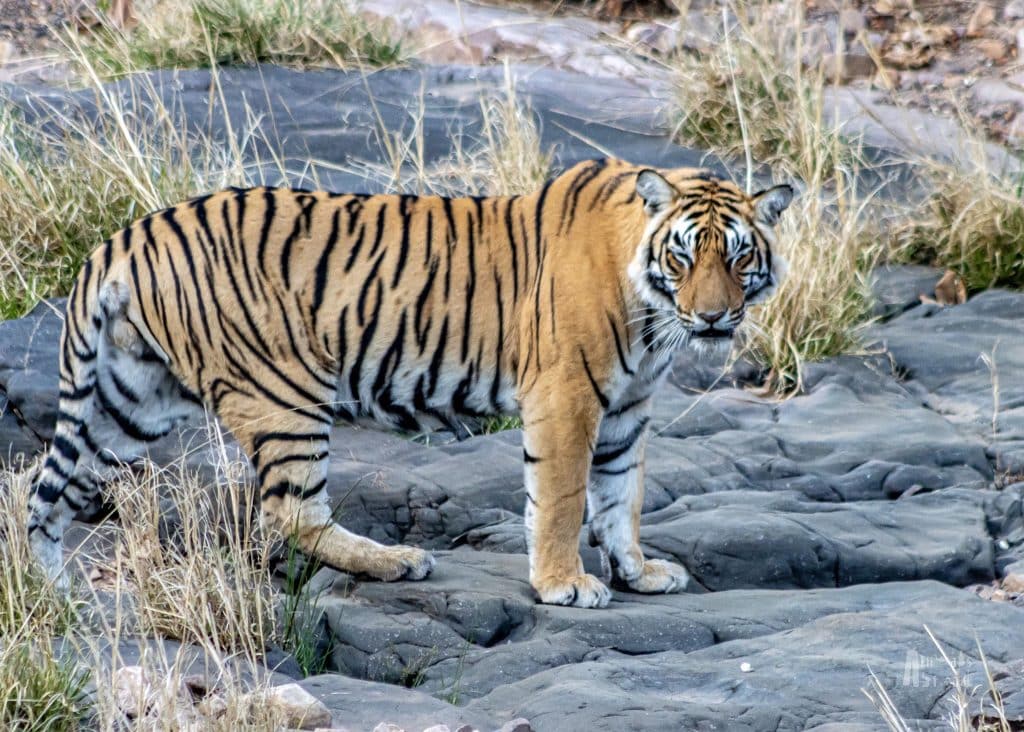
Preparing Kids for Safari
Help your kids enjoy the experience (and make it smoother for everyone) with a bit of prep.
Set Expectations Before You Go:
• Stay quiet and calm: Sudden movements and screams can frighten animals or draw unwanted attention.
• The animals are wild and roam freely: This isn’t a zoo, and you may not see any animals on game drives.
On the Drive:
• Binoculars: Bring a pair just for them—they’ll feel like real explorers.
• Animal checklist: Create a fun list of animals they want to spot and leave space to add unexpected ones.
• Cameras: Give them a kid-friendly so they can take their own photos.
• Safari Survival Kit: Let your kids pack their own small bag with:
-Animal checklist and pencil
-Binoculars
-Camera
-Water bottle
-Favourite snack
-Sun hat and hoodie
• Toilet break: Drives last 3–4 hours, always go before heading out. There are no bathrooms in the park.
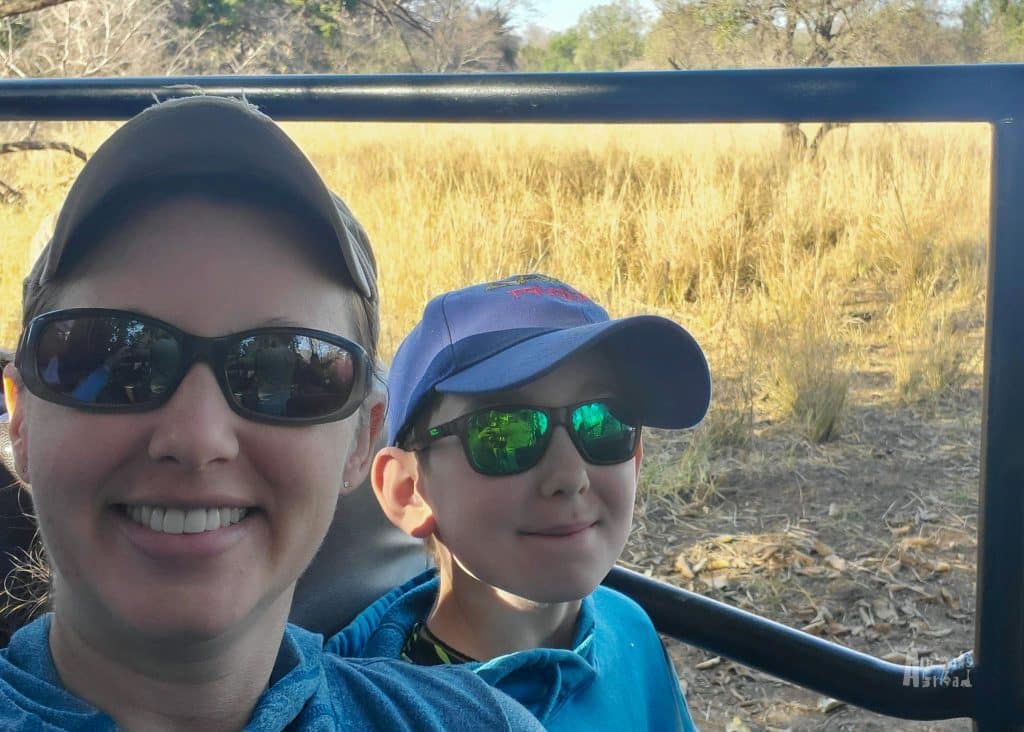
Tips for Tiger Safari
Book a mix of drives: Do both morning and afternoon drives to increase your chances. Avoid weekends if possible, as the park is busier and noisier.
Know the zones: Zones 1–5 typically have higher tiger densities, but sightings are possible anywhere.
Expect rough roads: Safaris can be jarring. If someone in your group gets motion sickness, take precautions.
Choose your vehicle wisely: Jeeps are more comfortable and flexible, but much pricier. Canters are affordable and higher off the ground, which can help you view in crowds.
Dress in layers: Mornings are cool and breezy in the open-top trucks. Once the sun rises, it heats up quickly.
Sun protection: A hat, sunglasses, and sunscreen are essential for afternoon drives.
Insect repellent: Not always necessary in the dry season, but good to have on hand.
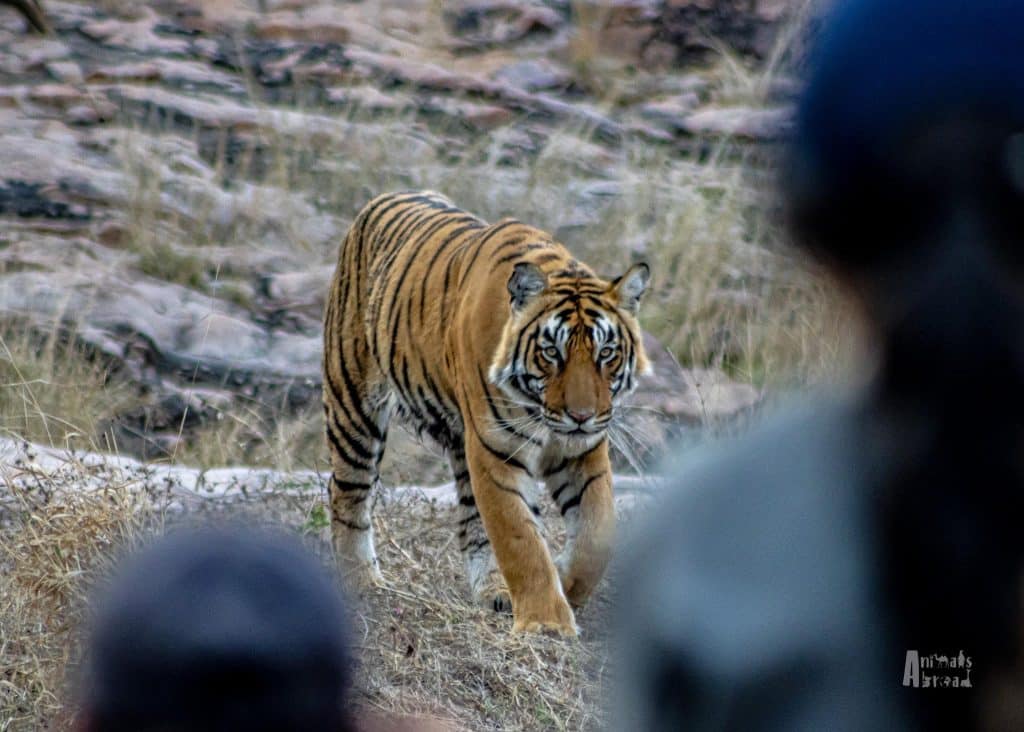
Our Take on Tiger Trekking
For our family—especially Jackson—this was the wildlife encounter of a lifetime, and Ranthambore delivered. Not every drive was successful, but the moment one of nature’s most elusive creatures stepped out of the trees and you lock eyes with a tiger in its natural habitat, it felt like magic.
Ranthambore isn’t always an easy adventure—it’s dusty, bumpy, unpredictable, and wild. But that’s what makes it unforgettable. If you’re up for the challenge, it might just become one of your favourite stops too.
